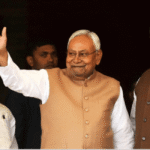China-India a statement that reflects Beijing’s stance on its often-tense relationship with New Delhi, the Chinese Ministry of Foreign Affairs called for viewing China-India ties from a strategic height and with a long-term perspective. This remark comes in response to Indian External Affairs Minister S. Jaishankar’s recent comments that India-China relations are navigating through complications stemming from the post-2020 border tensions in eastern Ladakh.
The India-China relationship—a complex blend of economic cooperation, historic mistrust, and territorial disputes—has taken center stage in regional and global diplomacy, particularly since the violent Galwan Valley clashes in 2020, which saw the loss of lives on both sides and brought relations to their lowest point in decades. While both nations have engaged in numerous diplomatic and military dialogues since then, China-India the path toward stability and normalization remains fraught with challenges.
This article examines the context behind Beijing’s statement, analyzes recent developments in China-India ties, and explores how these two regional powers can chart a path forward toward cooperation despite the complexities of their geopolitical environment.
Beijing’s Call for a Long-Term Perspective
Strategic Height and Broader Vision
China’s Ministry of Foreign Affairs emphasized that both sides must avoid being trapped by specific incidents, instead working toward long-term development and stability in their bilateral relationship. The statement called for viewing China-India ties from a strategic height and ensuring that disputes are kept in perspective within the broader context of cooperation and shared interests.
- A ministry spokesperson stated:
“As neighboring countries and ancient civilizations, the natural choice for China and India is peaceful coexistence and win-win cooperation.”
The remarks underscore Beijing’s desire to de-escalate tensions while steering the narrative toward mutual benefits in areas like trade, regional security, and multilateral platforms like BRICS and the G20.  For the more information click on this link
For the more information click on this link
Reaction to S. Jaishankar’s Remarks
The ministry’s comments came shortly after External Affairs Minister S. Jaishankar addressed India-China relations at a public forum. Jaishankar noted that the relationship is currently characterized by efforts to “disentangle itself from complications” resulting from the Ladakh border standoff. He emphasized that trust and transparency are critical to rebuilding ties.
Beijing appears to be responding diplomatically by advocating dialogue and focusing on broader objectives, reflecting its interest in moving past the contentious border issue toward a less confrontational relationship.
Key Issues in China-India Relations
China-India relations have been defined by a mix of cooperation and competition. However, several core challenges—including border disputes, military confrontations, economic competition, and differing global alignments—continue to strain their relationship.
1. Post-2020 Border Tensions
The single largest disruption in recent years has been the June 2020 Galwan Valley clashes, the first violent encounter between the two nations’ militaries in over four decades. These clashes exposed the volatility of their border disagreements along the Line of Actual Control (LAC) and resulted in subsequent military build-ups on both sides.
- Diplomatic and military talks since 2020 have achieved partial disengagement in several friction points like Pangong Tso and Gogra, but disputes remain unresolved in key areas, China-India including Depsang Plains and Demchok.
- India has repeatedly emphasized that normalization of ties cannot happen until the border situation is fully resolved. As Jaishankar said, “The state of the border will determine the state of the relationship.”
2. Economic Competition and Dependencies
China remains one of India’s largest trading partners, with bilateral trade volumes reaching $135 billion in 2022. However, the trade relationship is heavily skewed in China’s favor, with India running a significant trade deficit.
- Post-2020, India has ramped up efforts to reduce economic dependencies on China by promoting local manufacturing (e.g., under the “Make in India” initiative) and imposing restrictions on Chinese companies in strategic sectors like telecommunications and infrastructure.
- Despite these measures, economic interdependence remains a double-edged sword, with both sides benefitting from cooperation in sectors like pharmaceuticals, electronics, China-India and renewable energy.
3. Regional Rivalry in South Asia
China’s growing influence in South Asia through its Belt and Road Initiative (BRI) has caused tensions with India. Beijing’s partnerships with countries like Pakistan, Nepal, China-India and Sri Lanka are often viewed with suspicion in New Delhi.
- The China-Pakistan Economic Corridor (CPEC), a flagship BRI project, has drawn India’s ire as it passes through Pakistan-occupied Kashmir (PoK), territory India claims as its own.
- Similarly, China’s port investments in Sri Lanka and trade ties with Nepal have challenged India’s traditional role as the dominant regional power.
4. Global Geopolitics and Alignments
Both China and India play significant roles on the global stage, but their differing strategic alignments often put them at odds:
- India has strengthened ties with the Quad alliance (U.S., Japan, and Australia), widely viewed as a counterbalance to China’s influence in the Indo-Pacific.
- Conversely, China has deepened its partnership with Pakistan and engaged in global initiatives aimed at challenging U.S. dominance, occasionally clashing with India’s foreign policy objectives.
The Potential for Cooperation
While tensions dominate the headlines, there remain significant opportunities for cooperation between India and China on mutual areas of interest:
1. Trade and Economic Synergy
Despite post-Galwan measures aimed at reducing dependence on China, bilateral trade remains robust. Both countries can work toward creating a more balanced trade relationship by focusing on areas such as renewable energy, medical devices, technology, and semiconductors.
2. Climate Action and Energy Cooperation
As two of the largest emitters of greenhouse gases, China and India share a critical responsibility for tackling climate change. Collaborating on renewable energy projects, technology transfers, and sustainable practices could yield significant benefits for both nations.
- Joint initiatives in solar power and clean energy, particularly through BRICS or bilateral agreements, could be key areas of cooperation.
3. Multilateral Engagements
China and India both share platforms like BRICS, G20, and the Shanghai Cooperation Organisation (SCO), which offer opportunities to align their positions on global challenges such as trade,China-India cybersecurity, and public health.
- Beijing and New Delhi have historically found common ground on opposing protectionist measures from Western nations and advocating for greater representation of developing economies in global institutions.
4. Regional Stability
Both nations stand to benefit from a stable South Asia. By coordinating efforts in Afghanistan, countering terrorism, and improving regional trade connectivity, they can collectively work toward peace and development in the region.
Broader Implications of Improving Relations
Impact on Asia
Improved China-India ties would contribute significantly to stability in Asia, where strategic rivalries between the U.S., China-India , and Russia continue to create uncertainties. Positive developments in their relationship could set the tone for regional collaboration in trade and security.
Global Leadership in Developing Nations
As the two largest developing economies, China and India have the potential to spearhead movements addressing global inequalities, climate justice, and technology transfer to the Global South. Together, China-India their cooperation could amplify the voices of emerging economies in the global order.
Challenges to Bridging the Divide
While Beijing’s call for a strategic and long-term perspective is notable, China-India several significant roadblocks remain:
- Trust Deficit: The Galwan clashes created a trust deficit that continues to influence Indian public opinion and policymaking. Resolving this mistrust will require significant confidence-building measures.
- Geopolitical Divergences: India’s tilt toward the West (especially via the Quad) and China’s alliance with Pakistan and authoritarian regimes create competing priorities that are difficult to reconcile.
- Internal Political Pressures: In both nations, China-India nationalist sentiment makes concessions on contentious issues, such as the border, politically risky for leaders like Xi Jinping and Narendra Modi.
- Bilateral Communication Gaps: While there have been multiple rounds of diplomatic and military talks, the lack of a clear timeline for resolving the border standoff continues to fuel uncertainty.
 For the more information click on this link
For the more information click on this link
Moving Forward
To fulfill the vision of improving ties through a long-term strategic approach, China-India both nations must engage in consistent and sincere dialogue. A roadmap for progress could include:
- Resuming High-Level Talks: Organizing regular leadership summits to rebuild diplomatic momentum.
- Strengthening Economic Ties: Building economic incentives for peace through balanced trade agreements and industrial cooperation.
- Expanding Cultural Diplomacy: People-to-people connections through educational, tourism, and cultural exchange programs.
- Finalizing Border Agreements: Prioritizing border talks and demilitarizing contentious areas to reduce the risk of escalation.
Conclusion
Beijing’s emphasis on a strategic and long-term view for China-India relations reflects a willingness to move beyond immediate tensions and prioritize shared interests. However, achieving tangible progress requires both nations to address underlying issues such as the border dispute, China-India economic imbalances, and competing geopolitical ambitions.
As Asia’s two largest powers, China and India share the responsibility of fostering regional stability and driving global economic growth. While the challenges are significant, the opportunities for partnership could transform not only their bilateral relationship but also the broader dynamics of global politics in an era of growing uncertainty. ALSO READ:-Australian Open 2025: Sumit Nagal to Face Czech Republic’s Tomas Machac in First Round





